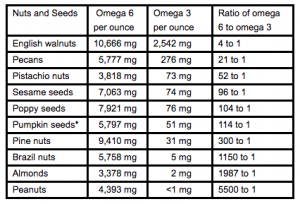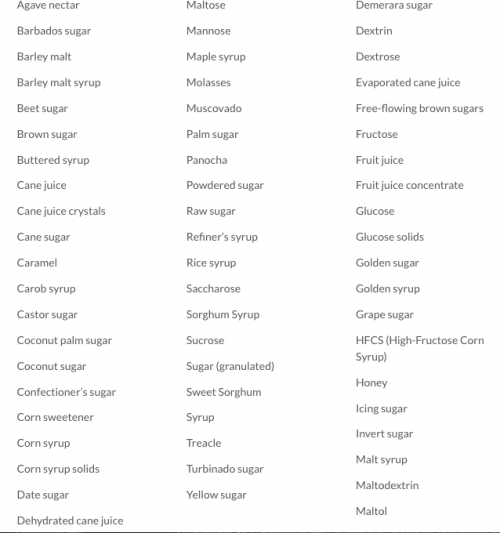NUTS, SEEDS & DRIED BEANS
According to a Harvard School of Medicine publication of there is growing evidence that consuming plant-based diet foods such as fruits, vegetables, whole grains and healthy plant oils can go a long way to reducing the risk of health concerns such as stroke, heart disease, diabetes and cancer.
*Harvard Medical School: Plant-based diet: Nuts, seeds, and legumes can help get you there.
The above-mentioned healthy plant oils are where the nuts, seeds and dried beans come in. It turns out that nuts and seeds are full of healthy mono and polyunsaturated fats and high in protein, and legumes (of which beans are a part) contain lean protein. And all are chock full of essential vitamins and minerals.
However, by digging a little deeper into this subject I found evidence which suggests that we still need to take an informed approach when picking from amongst the many choices available in this group.
Namely, we must be aware of the following factor:
The ratio of Omega 6 to Omega 3 content, especially in nuts and seeds.
And why is this so important?
Simply put it is now widely accepted that Omega 6 fatty acids cause inflammation in the body, whilst Omega 3 fatty acids reduce inflammation. And the ideal Omega 6 to Omega 3 ratio to keep these two processes in check is ideally 1:1 and no more than 4:1.
The following table created by Joanne L. Mumola Williams, PhD helps to put this into perspective:

ratios of Omega 6 to Omega 3 content
Out of all the nuts and seeds listed on the table above only English walnuts meets the desired ratio at 4:1
The good news is that amongst this group there are some very healthy choices. When it comes to foods rich in Omega 3 the following seeds are best:
- Flaxseed (4:1 in favour of Omega 3)
- Chia seed (3:1)
- Hemp seed (1:2.5)
Beans and Lentils high in Omega 3
- Mungo beans (or black lentils) at a whopping (14:1)
- Navy Beans (2:1),
- French Beans (1.7:1),
- Kidney Beans & Snap (String) Beans (1.6:1),
- Broad Beans (1.5:1),
- and Pinto Beans (1.4:1)
Considering the above information, my recommendation for this group would be not to avoid nuts and seeds altogether. After all nuts and seeds do contain many healthy nutrients which the body benefits from. I would simply ensure that my food choices also contained plenty of the Omega 3 rich seeds and lentils which would then serve to balance out the Omega 6 coming from the other sources.
FAT & OILS
There are many options when it comes to choosing which fats and oils to use with the DASH diet. And it will depend how you are using them, i.e. whether you are cooking with them, or using them in salad dressings, mayonnaise and so on.
But there is one category of oils which I would definitely want to avoid – the Seed and Vegetable Oil category which includes the following:
- Soybean Oil Sunflower Oil
- Corn Oil Sesame Oil
- Cottonseed Oil Grapeseed Oil
- Canola Oil Safflower Oil
- Rapeseed Oil Rice Bran Oil
These polyunsaturated oils, which are industrially produced and have to be highly refined in order to produce any oil at all from the seeds or vegetables, are full of inflammation-causing Omega 6 fatty acids, and thus in my opinion have no place in any healthy diet plan.
My preferences for cooking oils are Coconut (high heat) and Extra Virgin Olive Oil (low to medium heat). Butter (from grass-fed animals) is making a come back after decades of being shunned due to its high level of saturated fat and can safely be used for cooking, albeit sparingly. But please don’t confuse real butter with artificially produced margarine, which is definitely to be avoided. For salad dressings Extra Virgin Olive Oil is a great choice, so too Avocado Oil.
For an excellent overview of which cooking oils to use, go here
SWEETS
The Diet recommends the daily consumption of only small amounts of sweets – 1 tablespoon sugar, 8 oz (23g) sweetened drinks, 1 tablespoon sweet condiments such as jam, for example. This is in line with the American Heart Association’s guidelines for sugar intake which are no more than 9 teaspoons (37.5 gm) for men and 6 teaspoons (25 gm) per day. There is increasing evidence that sugar is detrimental to human health and especially in the large amounts typically consumed each and every day by most people – it leads to obesity which can cause high blood pressure, type 2 diabetes and heart disease.
However, tracking the amount of sugar being consumed daily is not at all easy. Sugar, or sweeteners (natural or artificial) are everywhere in our food, and you need to be a super-sleuth when it comes to uncovering all the clever disguises the food industry uses on its product labels.
Just check out this list of alternative names for sugar!

What to do?
The DASH diet advocates a high fruit and vegetable content. Right away realize that you will already be consuming a significant amount of natural sugars found in the fruits and to a lesser degree in the veggies you choose.
This is the best way to get your sugars for energy, since the fruit or vegetable fibre and water content will slow down the absorption of the sugar, and thus the liver will make use of the sugar efficiently rather than storing the excess as fat.
When it comes to other sweets the best approach is to avoid foods which contain all processed and refined sugars, high fructose corn syrup and also artificial sweeteners. And all soda and diet soda beverages would also be on my blacklist – they are just loaded with sugar, or worse chemically produced artificial sugar.
I prefer to use natural products such as honey, pure maple syrup, Stevia or even small amounts of fresh fruit juices as sweeteners, e.g. grape or blueberry. 
For ideas, click here for a list of the best natural sweeteners.
Final Thoughts
The DASH diet is a widely acclaimed and well reviewed healthy eating plan. It has been shown to reduce blood pressure and also when applied with modified portions to help lose weight.
It has my vote of approval because:
- It places emphasis on eating wholesome and nutrient-rich healthy food products, such as whole grains, fruits, vegetables, fish, poultry and some lean meats, nuts, seeds and lentils and low fat dairy.
- It steers clear of the empty caloric, high sugar and high sodium refined foods which are so full of chemicals and preservatives – junk foods, and heavily processed foods, and canned sweetened beverages, all of which promote bad health.
- It allows for plenty of choices within the food groups it recommends, which makes it more appetizing and less like being on a strict diet.
- It is an integral part of a healthy lifestyle change, which when combined with being active and getting lots of exercise, managing stress levels and building strong interpersonal relationships will not only help manage your blood pressure, but also promote a good healthy generally.
I hope that this 3-part post on the dash diet review and its food groups has been helpful. If you would like to comment on any of the information I have provided, or simply just to share your thoughts and experiences with this Diet, I would love to hear from you below.
